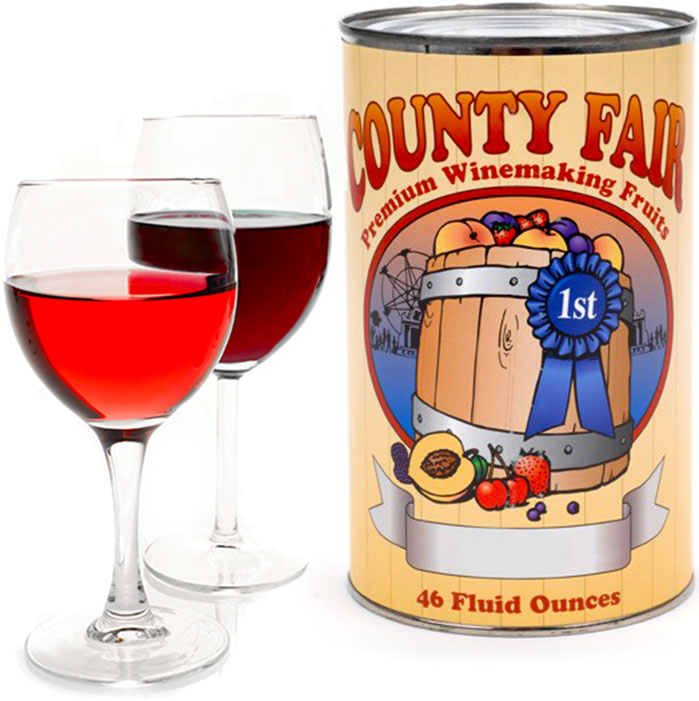 I’m having trouble understand how may cans of County Fair Fruit Bases to use. It says that you can use 1 to 4 cans to make 5 gallons of homemade wine. How many cans of the these wine making fruit bases should I use to make the best wine?
I’m having trouble understand how may cans of County Fair Fruit Bases to use. It says that you can use 1 to 4 cans to make 5 gallons of homemade wine. How many cans of the these wine making fruit bases should I use to make the best wine?
Thanks Wanda
—–
Wanda,
The number of cans of fruit base you use controls how light or heavy-bodied the wine will be. Using one particular number of cans is not necessarily better or worse than using another. It’s just different and subject to personal tastes and preferences.
If you like a crisp, refreshing wines, one that would goes great outdoors in the summer months, then you would use one or two cans of fruit base. These wines will be more thirst-quenching on the palette. If you prefer bold, full-bodied wines, one that might go well after dinner, than you would use three or four cans of the wine making fruit base. These wines will have a lot more body with a longer, more-layered finish. Regardless of the number of cans you use, the wine will turn out equally well in terms of quality. It’s more of a matter of personal taste.
On the side of each can of County Fair Fruit Base you are provided with the wine recipes and directions for each number of cans, from one to four. The wine making process is the same in each case, but the amounts of other wine making ingredients vary slightly. This is necessary to keep the wine’s flavor in balance.
So to answer your question more directly, you will need to decide how many cans of wine making fruit base are right for you. It’s a question of tastes, not whether it’s good or bad. Regardless of the number of cans of wine making fruit base you choose, follow the wine recipe on the side of the label and you will turn out a remarkable fruit wine… one you’ll be proud to share with family and friends.
Happy Winemaking,
Ed Kraus
—–
Ed Kraus is a 3rd generation home brewer/winemaker and has been an owner of E. C. Kraus since 1999. He has been helping individuals make better wine and beer for over 25 years.
Category Archives: Wine Making Ingredients
Can I Add Sugar During Fermentation?
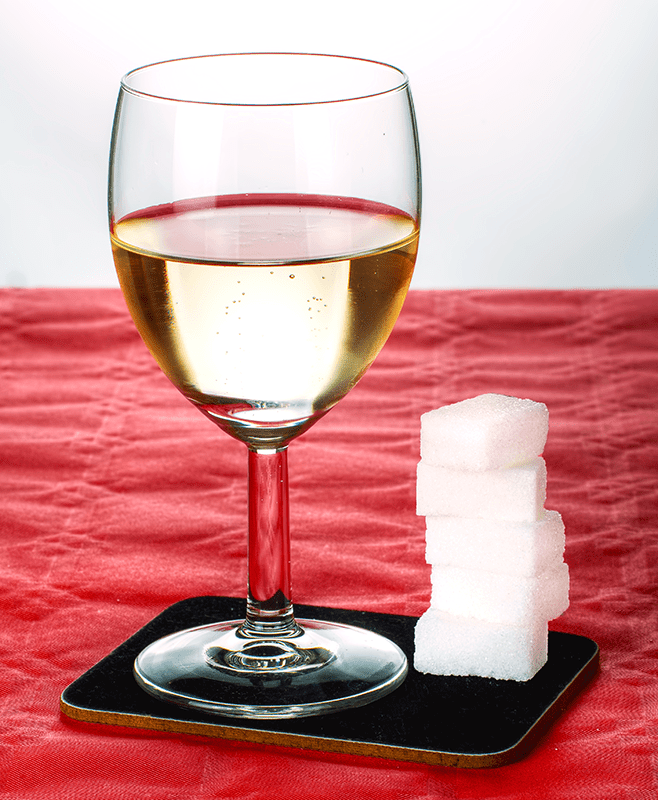 When making wine should I add all the sugar all at once or can I add sugar to the wine during the fermentation?
When making wine should I add all the sugar all at once or can I add sugar to the wine during the fermentation?
Name: Mark
State: Ohio
——
Hello Mark,
In general, you do not want to add sugar during fermentation. You will want to add all the sugar to the wine before the fermentation – all at once, upfront. There is no real advantage to spreading the sugar throughout the primary fermentation, just as long as you are shooting for a reasonable level of alcohol (10% to 14%). Any wine yeast you choose to use will be able to readily ferment to this level of alcohol, even when all the sugar is added to the wine must before the fermentation.
The biggest reason you’ll want to add all the table sugar all at once, besides the fact it’s less work, is that it makes it easier to calculate your wine’s finished alcohol.
Sugar is what turns into alcohol during the fermentation. This is fermentation 101. To know how much alcohol the fermentation is making, you have to know how much sugar has been fermented. This requires you to know how much sugar the fermentation started with and how much sugar the fermentation ended with. The difference is what was fermented into alcohol. Both of these things can be easily determined with a hydrometer by taking a reading before and after the fermentation and comparing the two.
 If you add sugar to the wine during the fermentation, additional hydrometer readings will need to be logged to eventually know how much alcohol is in the wine. These additional calculations can be annoying and even hard to remember to do. It requires you to pull out the hydrometer each time you want to add more sugar and take a specific gravity reading both before and after the addition of the additional sugar.
If you add sugar to the wine during the fermentation, additional hydrometer readings will need to be logged to eventually know how much alcohol is in the wine. These additional calculations can be annoying and even hard to remember to do. It requires you to pull out the hydrometer each time you want to add more sugar and take a specific gravity reading both before and after the addition of the additional sugar.
The only possible time you would want to add sugar fermentation is if you intend to make a high-alcohol wine. In this case you would want to start out the fermentation with enough sugar to reach 13% or 14% alcohol. Then as the fermentation runs out of sugar – which is determined with hydrometer readings – you will want to start feeding sugar to the fermentation in intervals.
The goal is to end up with a wine that is high in alcohol but not too sweet to drink. The fermentation will come to a point where the wine yeast can do no more. Exactly when that will be is not a certainty. It varies from one fermentation to the next, depending on a number of variables. When this happens you want little to no remaining sugar in the wine. This is the reason why you would feed the sugar to the fermentation as it progresses beyond 14%.
 So in the end I guess the answer to the question: “can I add sugar during fermentation?”, is yes you can. With the only side note being “but it only makes sense if you are making a high alcohol wine”. For any normal wine making situation, it is only creating more work to do so.
So in the end I guess the answer to the question: “can I add sugar during fermentation?”, is yes you can. With the only side note being “but it only makes sense if you are making a high alcohol wine”. For any normal wine making situation, it is only creating more work to do so.
Happy Winemaking,
Ed Kraus
—–
Ed Kraus is a 3rd generation home brewer/winemaker and has been an owner of E. C. Kraus since 1999. He has been helping individuals make better wine and beer for over 25 years.
Your Wine Could Be Cloudy Because Of A Pectin Haze
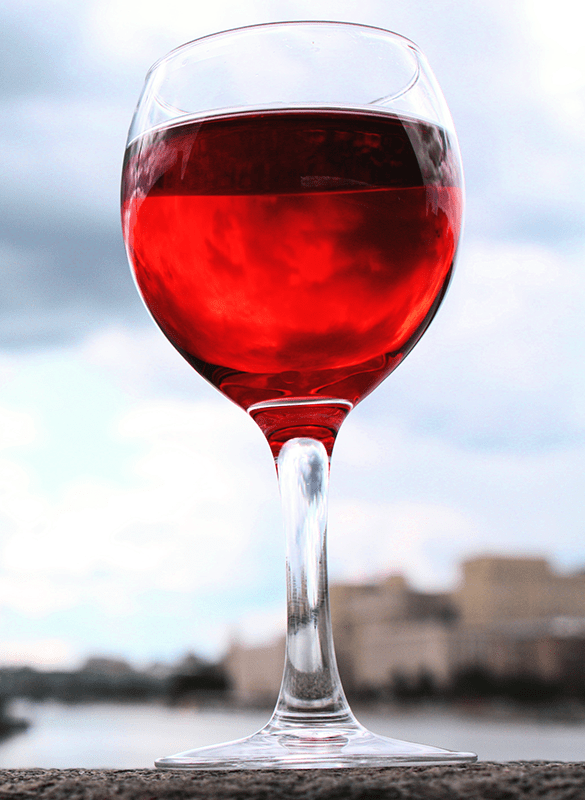 I am having some trouble getting some of my fruit wine to clear. The berry wines clear right away (black raspberry, elderberry, blueberry, raspberry, current) but some of the other fruit wines stay cloudy (apple, peach, pear, dogwood). Is there something different I should be doing with these wines to make them clear better?
I am having some trouble getting some of my fruit wine to clear. The berry wines clear right away (black raspberry, elderberry, blueberry, raspberry, current) but some of the other fruit wines stay cloudy (apple, peach, pear, dogwood). Is there something different I should be doing with these wines to make them clear better?
Name: Charlene
State: New York
—–
Hello Charlene,
It might be a pectin haze that’s making your wine cloudy. Some fruits have more pectin in them than others. Pectin is the gel that holds the fruit’s fiber together. If the pectin is not completely broken down during the fermentation you can end up with what known as a pectin haze in your wine. This sounds like what is giving you a cloudy wine.
During the fermentation the yeast will produce pectic enzymes to breakdown the pectin cells. You may have also added pectic enzyme directly to the batch per your wine recipe. With most fruits this is sufficient, but even then you can sometimes end up with a pectin haze with the particular fruit wines you mentioned.
Apple, peach and pear all have significant levels of pectin, more so than most other fruits. The dogwood I’m not sure about. If you did not add pectic enzyme to your wine recipe, then most certainly a pectin haze is the issue at hand. But, even if you did add pectic enzyme, this is still what I suspect is going on because of the specific wines that are cloudy. Pectic enzyme is that important.
As for what you can do now…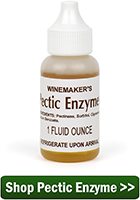
Whether or not you have added pectic enzyme to your wine must, you can add more now, however it may take some time for the wine to clear… sometimes months. Of course, this is assuming you have not bottled the wine already. If you have, then that ship has already sailed, so to speak. You could decant the wine; treat the wine; and then re-bottle, however I would not do it if it were my wine, simply for the fact that this type of cloudiness dose not affect the flavor at all only appearance. Live-and-learn, and move on.
Even at that, one thing you could do for future reference is to take a bottle of the suspect wine; add it to a quart Mason jar, or similar; and treat it with a teaspoon of pectic enzyme. This would be an extremely strong dose, so if a pectin haze is the issue at hand, you should see it respond to the addition of pectic enzyme by clearing in a matter of days if not hours. This will let you know if you have found the problem in the form of a pectin haze for future reference and give you a little piece of mind.
As a home winemaker, pectin haze issues should always be in the back of one’s mind. It’s something that doesn’t happen all that often, but when it does, it can be very aggravating. 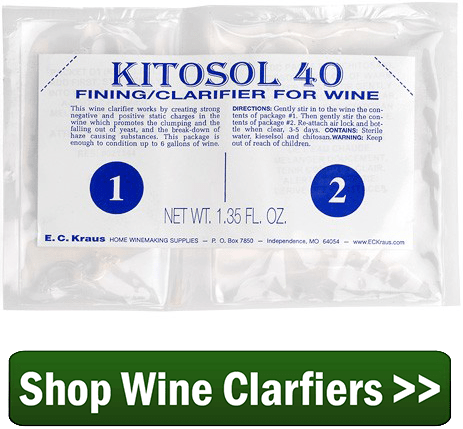 Keep a particularly close eye when fermenting fruits high in pectin and always use pectic enzyme when fermenting fresh fruits.
Keep a particularly close eye when fermenting fruits high in pectin and always use pectic enzyme when fermenting fresh fruits.
Happy Winemaking,
Ed Kraus
—–
Ed Kraus is a 3rd generation home brewer/winemaker and has been an owner of E. C. Kraus since 1999. He has been helping individuals make better wine and beer for over 25 years.
Sweetening Your Wine Kits To Make Them The Way YOU Want Them.
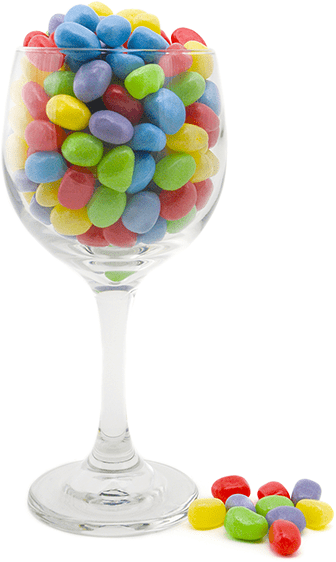 I was looking at buying the European Select Riesling and wanted to know if it can be made sweet.
I was looking at buying the European Select Riesling and wanted to know if it can be made sweet.
Thanx Parker
—–
Hello Parker,
The short answer to your question is: you can make any of the wine kits we sell as sweet or as dry as you would like. It’s just a simple matter of back sweetening the wine kit.
If you follow the directions that come with these wine kits your wine will come out dry. If you want the wine sweeter add sugar to taste before bottling. We recommend sweetening with cane sugar, but you can experiment with other sweeteners such as honey, grape concentrate, etc.
The cane sugar should be completely dissolved before sweetening the wine kit with it. The easiest way to do this is to put the cane sugar with one to two times the water in a sauce pan. Heat the mix until the liquid becomes clear. Once the mixture has completely cooled you can blend it into the wine.
If you are sweetening your wine kit you must also add potassium sorbate
to eliminate any chance of the wine re-fermenting.
Potassium sorbate is a wine stabilizer that hinders the yeast cells ability to regenerate itself. Without the potassium sorbate you can end up with bottles of wine that have an active fermentation in them. That would not be a good thing. Pressure will build up until it either pops the cork or explodes the bottle. So, be sure to add a dose of potassium sorbate at the same time. That would be 1/4 teaspoon per gallon of wine.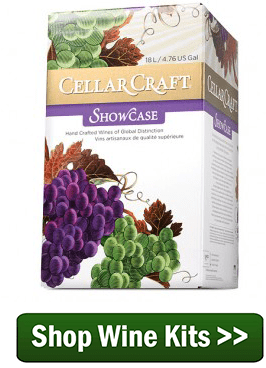
Another way to go about sweetening wine kits is to use wine conditioner. This is a wine sweetener that already has the wine stabilizer in it. They come in pint bottles. This is usually about the right amount for sweetening six gallons of wine. By using the wine conditioner you do not have to worry about your wine re-fermenting in the bottles.
When back sweetening your wine kits, how much sugar you add is completely up to you. One of the most enjoyable things about making your own wine is that you get to make it the way you want it.
—–
Ed Kraus is a 3rd generation home brewer/winemaker and has been an owner of E. C. Kraus since 1999. He has been helping individuals make better wine and beer for over 25 years.
How Many Cans Of Fruit Wine Base Should I Use In My Wine Recipe?
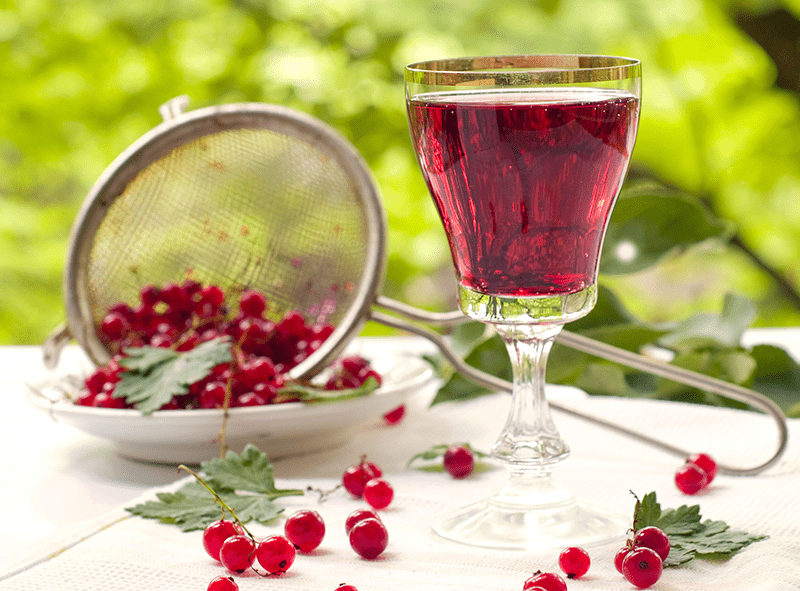 I would like to buy a kit, but would prefer to make a fruit wine. So I’m planning on buying the Your Fruit! Wine Making Kit and then buying the County Fair Fruit Wine Base. I’m confused about the number of cans (46 oz) I need or want… the catalog suggests using 2-4 cans. So I guess my question is: What changes when you add more fruit wine base?
I would like to buy a kit, but would prefer to make a fruit wine. So I’m planning on buying the Your Fruit! Wine Making Kit and then buying the County Fair Fruit Wine Base. I’m confused about the number of cans (46 oz) I need or want… the catalog suggests using 2-4 cans. So I guess my question is: What changes when you add more fruit wine base?
Thank you very much for your time. I’m really exited to start making wine!
– Holly
—–
Hello Holly,
Thank you for this much needed blog question about fruit wine bases.
The primary difference you will notice between using two cans of County Fair Fruit Wine Base in your wine recipes and four cans is the body. The more cans you use, the more body the wine will have. If you don’t know what body means, it can best be described as the mouth-feel of the wine – the viscosity of the wine. Another way to look at it is to think of the difference between whole milk and skim milk.
There are other secondary differences as well. When using less cans in your wine recipes you get a more crisp, refreshing wine. When you use more cans you get a more robust, assertive wine. A crisp wine is more refreshing or thirst quenching. Some might call it a summer wine. A robust wine might be something you would drink with dinner. With a robust wine the flavors tend to linger on the palate longer, competing very well with the flavors of the meal.
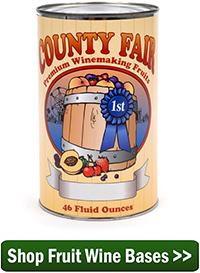 Something else that should be pointed out is that wines made with two cans of fruit wine base will age out more quickly than wines made with four cans of the fruit wine base. A two can wine recipe might peak in 4 or 5 months, whereas a four can wine recipe might peak around a year. This is all very subjective, so each persons impression of these wines might vary, but on average this is true.
Something else that should be pointed out is that wines made with two cans of fruit wine base will age out more quickly than wines made with four cans of the fruit wine base. A two can wine recipe might peak in 4 or 5 months, whereas a four can wine recipe might peak around a year. This is all very subjective, so each persons impression of these wines might vary, but on average this is true.
I hope this answers your questions. It’s a matter of style and the type of wine you like to drink. Many people assume that four cans of the County Fair fruit wine base will taste twice as good as two in their wine recipes, but this is not necessarily true. It will have the characters described earlier, but whether or not it makes it better is a matter of personal tastes.
Happy Wine Making,
Ed Kraus
—–
Ed Kraus is a 3rd generation home brewer/winemaker and has been an owner of E. C. Kraus since 1999. He has been helping individuals make better wine and beer for over 25 years.
Do Wine Concentrates Need Sulfites Added?
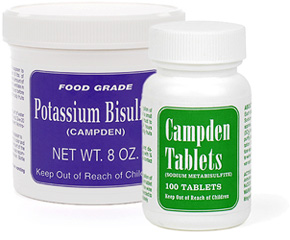 I started a batch of the SunCal California red [grape concentrate]. This is first time I have used a kit like this. I noticed it does not call for Campden tablets to be used. Is this correct, or does this wine concentrate need sulfites?
I started a batch of the SunCal California red [grape concentrate]. This is first time I have used a kit like this. I noticed it does not call for Campden tablets to be used. Is this correct, or does this wine concentrate need sulfites?
David J.
—–
Hello David,
When making wine from fresh fruits it is important to treat the wine must with a sulfite of some kind before starting the fermentation. You could use the Campden tablets you mentioned. You could also use potassium metabisulfite or sodium metabisulfite. Any of these will release sulfites into the wine. The dosage is right on the container they come in.
The reason for adding sulfites to a wine must is to destroy any wild molds, bacteria and other unwanted, microbial nasties that could eventually grow and ruin your wine. The sulfites release into the juice killing these wild elements. After that, they leave the wine, dissipating into the air as a gas. Once the wine must has sat for 24 hours, with the cover off the fermenter, you can then add wine yeast and start the wine making process as you normally would.
However, when making wine from wine concentrates you do not need to add sulfite. Any of the SunCal concentrates or other packaged wine making juices have already been treated and are ready to go when you get them. All you need to do is mix in the wine yeast and other ingredients, and let it ferment.
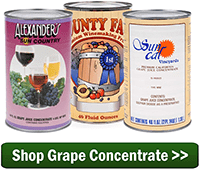 As an additional note, it is important to remember that even thought wine concentrates do not need sulfites added before fermentation, they do need them before bottling. By adding sulfites to any wine before bottling, you are are dramatically reducing the chance of the wine spoiling. You are also dramatically increasing the wine’s ability to retain its freshness for an extended period of time.
As an additional note, it is important to remember that even thought wine concentrates do not need sulfites added before fermentation, they do need them before bottling. By adding sulfites to any wine before bottling, you are are dramatically reducing the chance of the wine spoiling. You are also dramatically increasing the wine’s ability to retain its freshness for an extended period of time.
There is no reason to wait 24 hours after adding the sulfites. Just blend it in and bottle immediately. You can find more info on when to add sulfite to a wine on our website.
David, I hope this information helps you out. Now you know that wine concentrates don’t need sulfites added before fermentation It was a great question, and I’m glad you asked it.
Happy Wine Making,
Ed Kraus
—————
Ed Kraus is a 3rd generation home brewer/winemaker and has been an owner of E. C. Kraus since 1999. He has been helping individuals make better wine and beer for over 25 years.
There's Too Much Sugar In The Primary Fermentation!
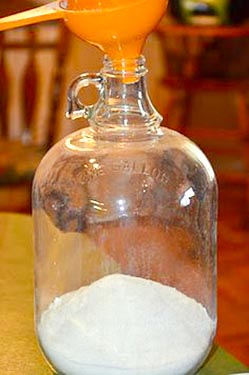 I have 6 gallons of red wine must which failed to start fermenting even after 3 days since I added Lalvin 71B-1122 yeast. I may have added too much sugar to the primary fermentation. The Brix No. was 27 and Sp Gr 1.110. What can I do to get the wine must fermenting before it gets spoiled? Thank you for your help. Ulysses A.
I have 6 gallons of red wine must which failed to start fermenting even after 3 days since I added Lalvin 71B-1122 yeast. I may have added too much sugar to the primary fermentation. The Brix No. was 27 and Sp Gr 1.110. What can I do to get the wine must fermenting before it gets spoiled? Thank you for your help. Ulysses A.
Name: Ulysses A.
State: TN
—–
Hello Ulysses,
It may very well be that you have too much sugar in the primary fermentation, and that is what’s causing you to have a stuck fermentation. But I would also suggest going over the Top 10 Reasons For Fermentation Failure to make sure that it is not something else.
Putting too much sugar for the yeast to ferment is one of the 10 reasons listed, but by making sure the other 9 couldn’t possibly be the reason, your can then comfortably narrow your focus on the cause.
What I would do if I were in your shoes is take a quart jar – like a Mason jar – fill it half way with the wine. Then add water until the jar is 2/3 full. Mix in a quarter teaspoon of either Yeast Nutrient or Yeast Energizer. Then sprinkle directly into the jar another packet of wine yeast. This is simply to create a yeast starter for the wine yeast by using a diluted wine must. Do not rehydrate the wine yeast in warm water first. Add the packet directly to the yeast starter.
The yeast starter should start fermenting within hours. Once you see the level of foaming peak, that will be the optimal time to pitch the yeast starter in with the rest of the wine must. This is typically at around 18 hours, but can vary from 6 hours to 3 days.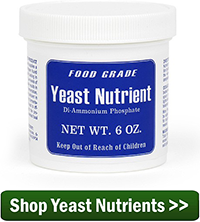
I am fairly confident that this will overcome your stuck fermentation and get your wine fermenting. A specific gravity of 1.110 is not all that ridiculous, it’s just high enough to cause some difficulties. With future batches you will want to use your wine hydrometer to make sure that you do not add too much sugar for the primary fermentation.
Other things you can do to help the yeast starter be successful is add an additional half dose of Yeast Nutrient to the entire batch. And as mentioned before, use the other 9 reasons for fermentation failure as a guide to improve your fermentation’s situation.
If the yeast starter fails to get things going then there are two other things you can do:
- Dilute the wine with water until the sugar level is brought down to a more suitable level. The fermentation should start on it’s own after doing this.
- Switch to a wine yeast that has a better tolerance of higher sugar levels. I would suggest Red Star: Pasteur Champagne for this purpose.
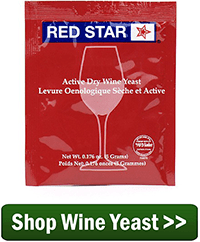
Putting too much sugar in the primary fermentation is something that can happen from time to time. Just realize that there are things you can do to resolve the issue without any sacrifice to the wine, whatsoever.
Happy Winemaking,
Ed Kraus
———————————–
Ed Kraus is a 3rd generation home brewer/winemaker and has been an owner of E. C. Kraus since 1999. He has been helping individuals make better wine and beer for over 25 years.
Wine of the Month: Pear Wine
Our wine of the month is pear wine. This lightly colored, sweet wine packs in the nutrients given the healthful properties of its main ingredient: pears. In addition to a delicious recipe, we’ve got some useful tips so you get the most flavor out of your wine.
Why should I make pear wine?
Pears are a member of the rose family of plants and are chockfull of antioxidants, dietary fiber, and flavonoids. In fact, about half of the fiber found in the pear can be found in its skin. The phylonutrients contained in this delicious fruit not only contain antioxidants and anti-inflammatory flavonoids, but also contain cinnamic acids that can help prevent cancer and decrease the risk for Type 2 Diabetes. Pears, along with apples, are known to have the second highest number of flavonols among all fruits and veggies.
Now let’s get to the wine part. Due to the fact that pear wine is a fruit wine rather than a grape wine, it has a higher ORAC content. In short, this means that it’s winning the antioxidant game. We’ll cheers to that!
Recipe:
Makes about 5 gallons
20lbs of Pears
10 lbs. of Sugar
1 tbsp. of Yeast Energizer
1/2 tsp. of Pectic Enzyme
3 tbsp. of Acid Blend
1/2 tsp. Wine Tannin
Yeast EC-1118
There are a few things to keep in mind while you’re making your pear wine. For the best results, you should slightly over ripen the pears. This is key, because they aren’t an extremely flavorful fruit by nature. If you don’t let them ripen, the wine will have more of an apple flavor. Let them get extremely soft (without rotting) and you’ll set yourself up for success. Also ensure that you rinse your pears before you crush them.
Where and how can I find pears?
The state of Washington is the largest grower of pears in the United States. It accounts for half of all of the pears distributed in the country, followed by California and Oregon. Most of the pears found in US grocery stores fall into the European Pear category. They can be found in green, yellow, red, gold, and brown. Once you find them at the grocery store, you’ll need to give them a few days to ripen. Just make sure you watch them carefully, because once they ripen, they tend to perish quickly. It can be hard to determine ripeness because many pears do not change color as they ripen.
What foods does pear wine pair best with?
Given pear wine’s light and refreshing taste, it pairs well with bold and flavorful cheeses like blue cheese and goat cheese. Spread some cheese on a cracker and sip some pear wine in between for the perfect pre-dinner snack. As for main courses, pear wine tastes great with white meats, either baked or roasted. Finish off the meal with a fruit or nut-based dessert and you’ve successfully and deliciously paired your pear wine!
Wine of the Month, Wild Grape Wine
Our wine of the month is wild grape. When it comes to winemaking, grapes are generally classified into three separate groups: wild, wine, and European wine. Wild grape wine can be made with grape varietals such as Muscadine, Fox, and Frost. These grapes are high in acid, low in sugar, and assertive in flavor. We’ve got the lowdown on this delicious recipe! We’ll tell you where to find the grapes, their various health benefits, and which foods they pair best with.
Why should I make wild grape wine?
It comes as a surprise to many that wine can be healthy. When you make wild grape wine, the seeds of the grapes contain polyphenols, which are micronutrients containing anti-inflammatory and anti-oxidant properties. Evidence has proven that polyphenols can help prevent cancer, type 2 diabetes, cardiovascular and neurodegenerative diseases. Wild grapes also contain vitamins B1, B6, C, manganese, and potassium. Check out our wild grape wine recipe to get started!
Recipe:
20lbs of Wild Grapes
10 lbs. of Sugar
2 tbsp. of Yeast Nutrient
¾ tsp. of Pectic Enzyme
½ Wine Tannin
Yeast EC-1118
Wondering why this recipe calls for so much sugar? Keep in mind that because wild grapes contain the lowest amounts of sugar, they will need the most added to make wine. Pressing the wild grapes, however, can be done very quickly because a small tabletop press can crush 50-100 lbs. of grapes (about 15 lbs. a time). This recipe should make at least 5 gallons. If you’re a bit rusty on wine making with grapes, check out our guide to give your memory a refresh.
Where and how can I find wild grapes?
Unlike other grapes that tend to grow in clusters, wild grapes grow as separate berries. These are typically a bit smaller than other grapes, and can be black, purple, or dark blue. Fortunately, wild grapes can be found in almost any climate. Their vines, which grow very quickly and tend to climb and envelop structures, can be found along roads, fences, forests, and riverbanks. In fact, the wild grape is also called the riverbank grape!
What foods does wild grape wine pair best with?
The pungent taste and aroma of wild grape wine pairs especially well with rich dishes and meats. Similar to merlot, malbec, pinot noir, and cabernet sauvignon, this variety compliments beef, steak, game, lamb, pasta entrees, and rich cheeses very well. The bold flavor of this recipe will make your meaty and cheesy dishes that much better.
So next time you venture outside, keep your eyes peeled for the winding vines with the dark grapes- they might just help you make your next batch of wine! For more information on the home winemaking process and the tools you’ll need, check out our winemaking equipment and accessories.
Make Wine Using Cheap Fruit From Your Grocery Store
Did you ever think, while passing by the produce at your grocery store, you could purchase that fruit to make wine? Believe it or not, it is possible to make delicious wine from your average grocery store inventory. Trying out different types of fruit will expand your palate and help you move away from the strict red and white divide. Based on how much you’re looking to spend and the flavor you desire, here are some of the best grocery store fruits for home winemaking.
Continue reading
